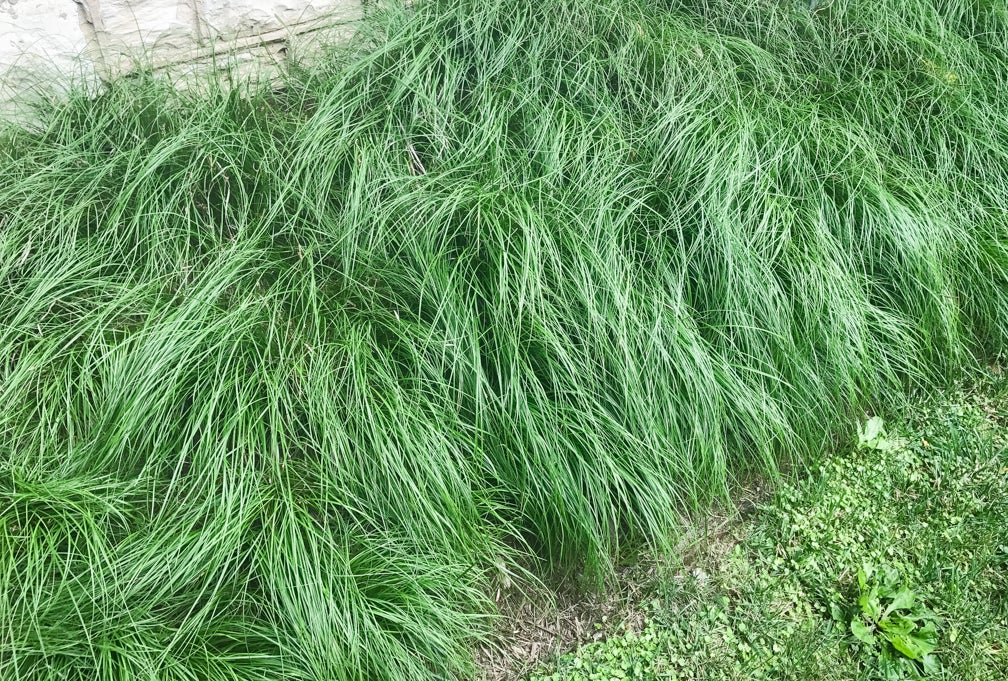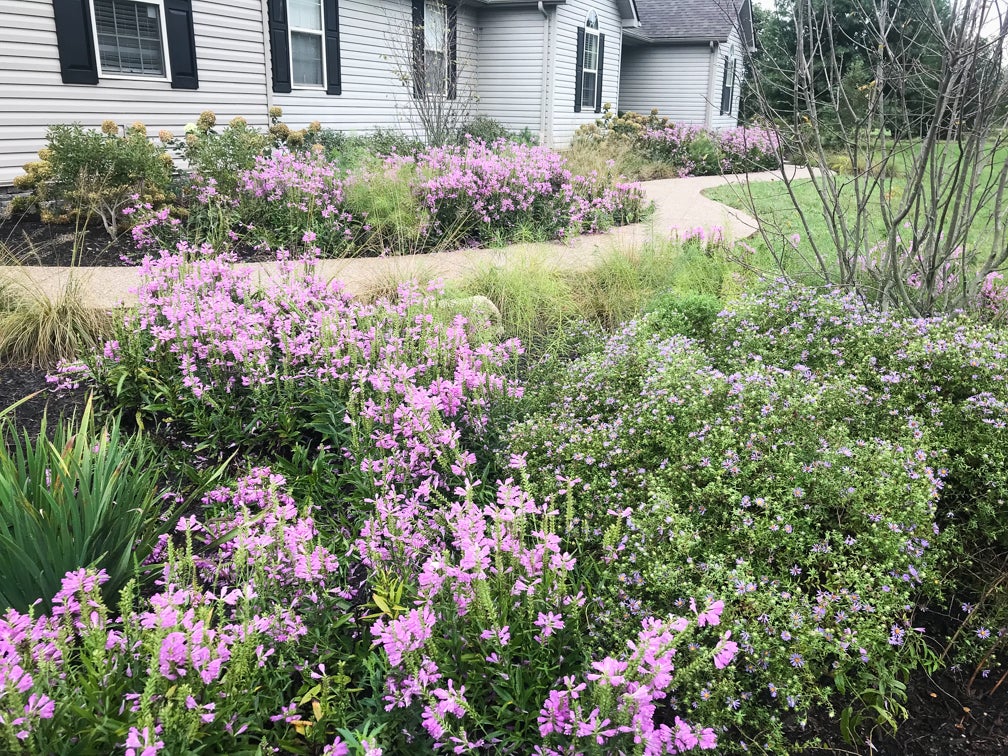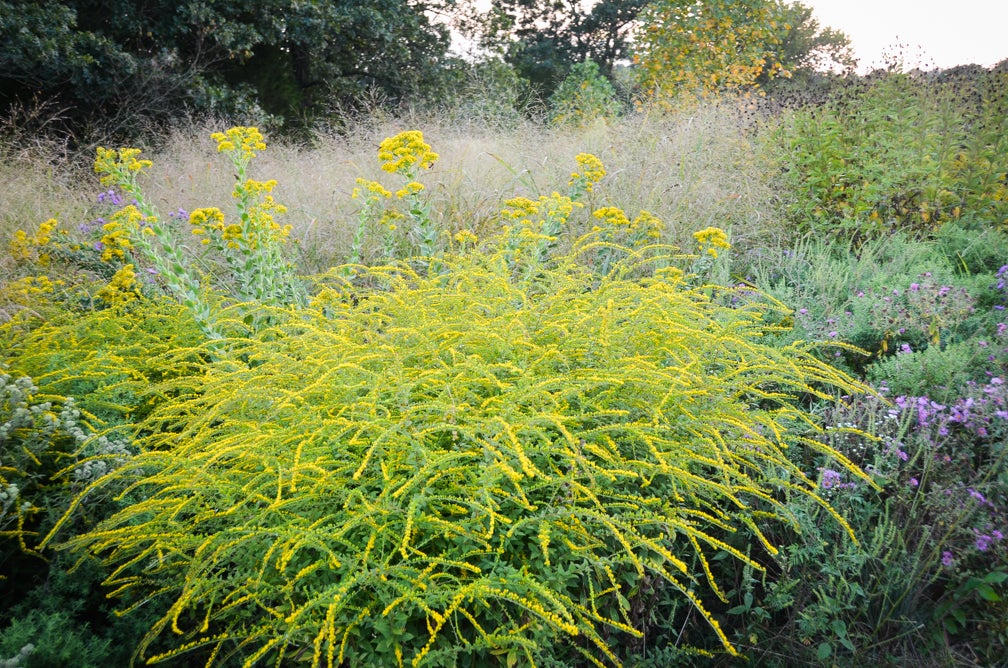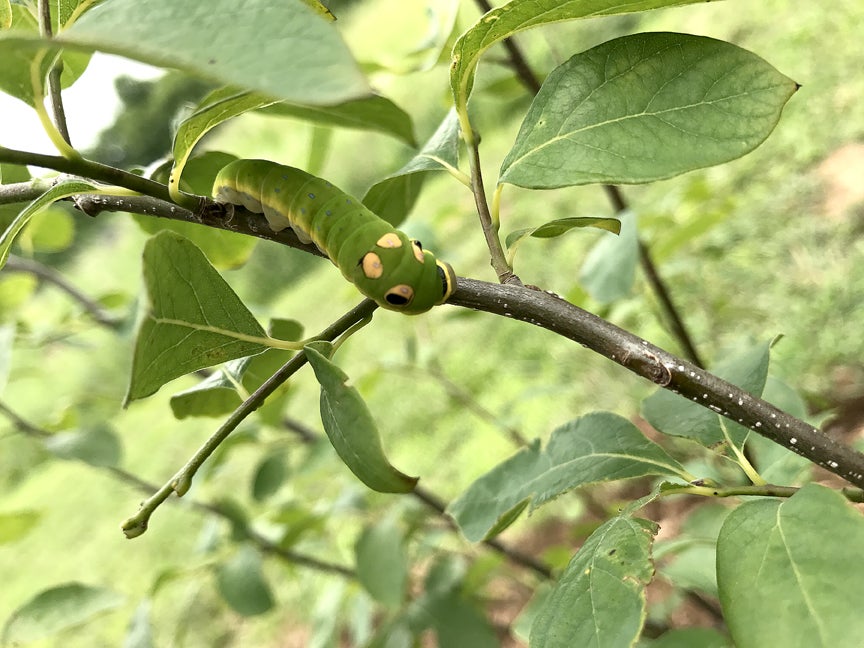Plants grow in communities based on soils, exposure, climate and rarely stand alone. Yet, humans have the odd habit or aesthetic style of making shrubs green islands in a sea of mulch. Not only does this create more work and expense, this segmented, unnatural style also contains very little diversity.
By nature, native plants that have co-evolved with native insects for millions of years will provide nectar, host, and food sources for insects, pollinators, birds and the entire ecosystem. If you have a tough spot or a large area to cover, these native naturalizers are especially good at taking up a lot of real estate. Since most are at least semi-aggressive, they can be installed by seed or plug, depending on the plant.
Mountain Mint (Pycnanthemum sp.): Mountain Mint is a great nectar source for pollinators. Since it’s in the mint family, it does spread, but not as aggressively as non-native mint. There are many native species to choose from!
Bee Balm or Wild Bergamot (Monarda sp.): Bee Balm is a fragrant native with a long bloom time and can naturalize nicely among the landscape. Great for attracting birds, hummingbirds, butterflies and a large number of native bees.
Goldenrod (Solidago sp.): Choosing the right goldenrod species is important as many cultivars can be very aggressive spreaders, but in some cases, that might be the desired effect.
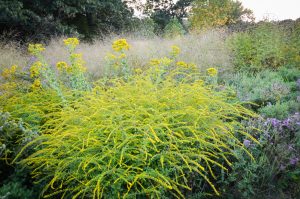
Some goldenrod species can be very aggressive spreaders, but in some cases, that might be the desired effect. (Photo courtesy Inside Out Design)
White Wood Aster (Eurybia divaricate): White Wood Aster’s showy, fragrant blooms appear late in the growing season when the garden is typically starting to look drab, and will vigorously spread throughout any shaded area. It will even work in dry shade.
Golden Groundsel, Butterweed (Packera aurea): The roots colonize and can achieve a groundcover effect over time, and is also great for attracting bees.
“Vivid” Obedient Plant (Physostegia virginiana ‘Vivid’): “Vivid” Obedient Plant is anything but obedient, but also comes with a spectacular display of pink blooms late in the season. Species plants are noted for being aggressive spreaders in the landscape by both rhizomes and self-seeding, but works beautifully for filling in large areas.
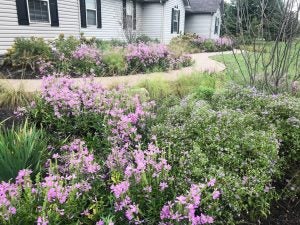
Vivid Obedient Plant mingles among other native plantings and provides late season color. (Photo courtesy Inside Out Design)
Pennsylvania Sedge (Carex pensylvanica): Pennsylvania Sedge is a fine-textured sedge, growing no taller than 8-inches when blooming. It’s ability to grow in full sun or full shade, in dry soils make it a perfect low maintenance groundcover. Pennsylvania Sedge provides seasonal cover and food for birds and small wildlife, and is a great filler for beds instead of mulch.
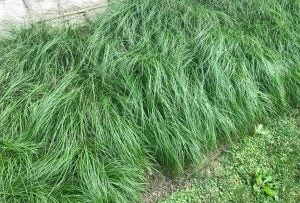
Pennsylvania Sedge is a fine-textured sedge, growing no taller than 8-inches when blooming. It’s ability to grow in full sun or full shade, in dry soils make it a perfect low maintenance groundcover. (Photo courtesy Inside Out Design)
Yarrow (Achillea millefolium): Yarrow can bloom as early as April to as late as September. Clusters of flowers emerge from lacy foliage in a variety of colors. Yarrow is beneficial to bees and attractive to butterflies and thrives in full sun, and is tolerable of hot, dry summers. It makes for beautiful additions to dried flower arrangements too and will spread enough to fill in an area.

